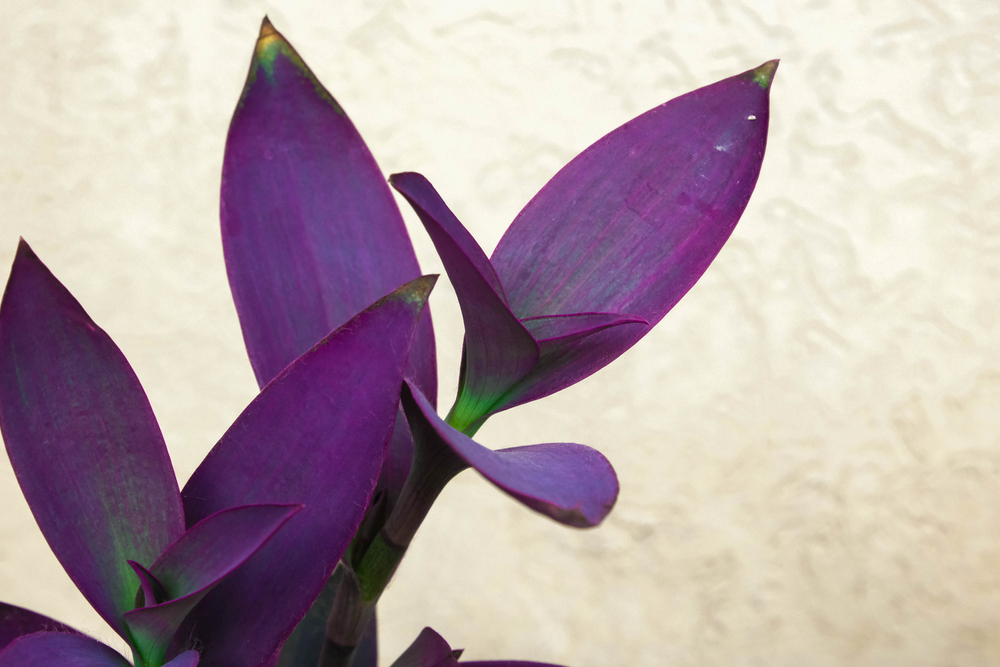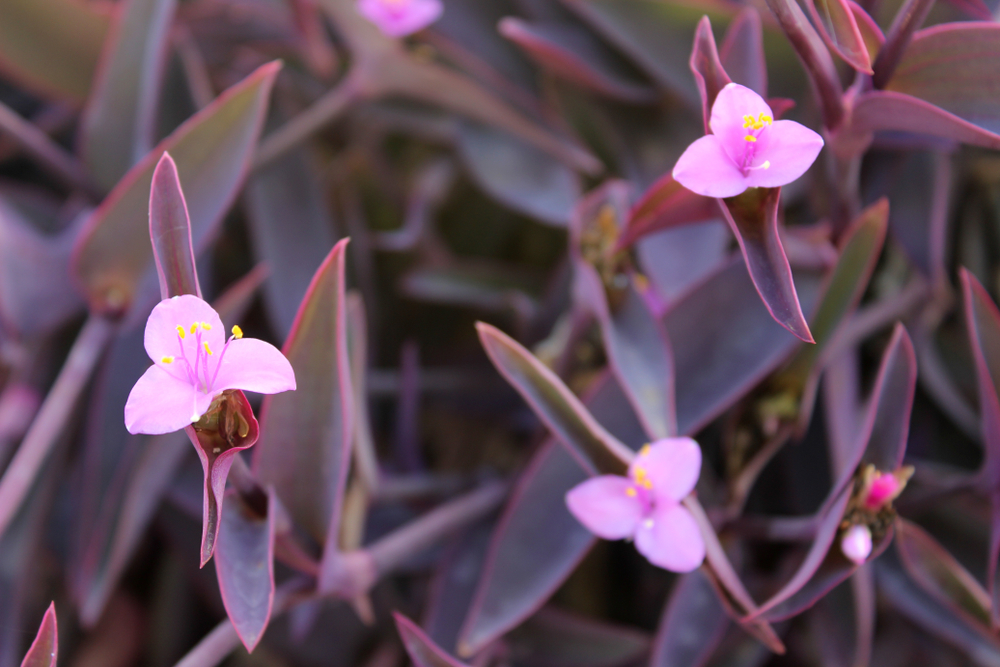A member of the spiderwort family, the Setcreasea Purple Queen features long and striking purple-colored leaves in ornamental form.
| Botanical Name | Tradescantia pallida ‘Purpurea’ |
| Common Name | Purple Queen, Purple Heart |
| Plant Type | Annual |
| Flower Color | Small and light pink flowers |
| Size When Mature | 8 to 12 inches |
| Bloom Time | Summer |
| Sun Requirements | Full Sun, Partial Sun |
| USDA Hardiness Zones | 10 to 12 |
| Soil PH Range | 6 to 8 |
| Soil Type | Loamy, well-draining |
| Water Needs | Medium |
| Native Area | Mexico |
What you Need to Know About The Setcreasea Purple Queen
Grown for its captivating purple foliage, the Setcreasea Purple Queen is an evergreen spiderwort variety that can provide excellent landscape contrast to your yard or garden. The plant grows relatively low and reaches only a maximum of 12 inches upon maturity.
The ‘Purple Queen’ plant is versatile as well and can thrive in pots, hanging baskets, or as ground cover. You can even bring it in as a houseplant on a bright sunny window. Care is relatively easy as long as its light and watering needs are met.
How to Care for Setcreasea Purple Queen
Here’s everything you need to know about growing and caring for a thriving Setcreasea Pallida.
Light
The Purple Queen is a specimen that grows best where there’s full sun or an area in your garden or yard that gets upwards of direct sunlight for 6 hours or more. In this environment, you get the best of what the plant has to offer- long, shiny purple leaves, and light pink blooms with dark pink streaks sitting atop the foliage.
Setcreasea purple queen is adaptable enough to still grow well in a partial shade environment, although there will be fewer flowers. If you’re primarily looking to add a nice and deep shade in your house or places that need color, consider growing the Purple Heart in a pot or container.
Water and Soil Needs
When it comes to medium, Tradescantia pallida ‘Purple Queen’ prefers rich and loamy soil. However, you should make it well-draining in order to avoid root rot and issues associated with waterlogged soil. You can amend with organic material such as aged compost before planting your purple queen plants to support their growth.
As a general rule, you should only water your Purple Heart plant when the top inch of the soil is dry. It’s fairly drought tolerant and can survive a missed watering or two. You may need to monitor the moisture levels more on hot days and during the summer season. When irrigating, make sure to thoroughly soak the soil and allow the water to pass through.
Temperature Requirements
The Tradescantia pallida ‘Purpurea’ can grow in USDA zones 10 to 12 as a perennial, while in lower zones the plant is treated as an annual. In areas that get below 50 degrees F, it’s recommended that you grow the Purple Heart as a potted plant or house plant and bring them indoors for overwintering.
Fertilizer
The best fertilizer to use on a Setcreasea ‘Purple Queen’ is an organic feeding of aged compost. Alternatively, you can feed your plant a diluted balanced liquid solution of 10-10-10 in NPK ratio.
Fertilizing your Purple Queen can be done at the start of the growing season and once the danger of frost has passed. You can give a half-strength dose in mid-spring, and another in mid-summer or early fall. Follow the instructions on the packaging to avoid fertilizer burn.
Common Diseases
Setcreasea Purple Queen owners will be delighted to know that the specimen doesn’t have that many enemies in the pest and disease department. However, do keep an eye out for vine weevils and aphids that might attack your plant now and then.
In order to stave off pests, you should provide all its growing requirements and water regularly. Spray neem oil or a similar organic solution if the plant is heavily infested, and pick off the insects by hand whenever you water. Also, do not overwater or it will lead to root rot and fungal diseases that can cause the leaves to turn soft and yellow.
Setcreasea Purple Queen Propagation
You can make several clones of your original Purple Queen plant through stem cuttings that are about 3 to 5 inches in length.
Propagating your purple spiderwort can be done in spring or summer when the weather is nice and warm. Find and choose a healthy stem that has three or four sets of leaves, then cut it off using a sharp knife or clean garden shears. Remove the bottom leaves and put them in a pot that contains loamy soil.
Keep the soil constantly moist but not too soggy to encourage root formation. It shouldn’t take that long for the setcreasea purple queen cuttings to root and grow- you’ll have a new purple heart plant ready in a week or two.


